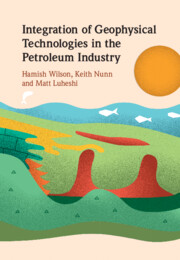Book contents
- Integration of Geophysical Technologies in the Petroleum Industry
- Integration of Geophysical Technologies in the Petroleum Industry
- Copyright page
- Contents
- Contributors
- 1 Introduction
- 2 The Hydrocarbon Exploration Process
- 3 Crustal Seismic Studies
- 4 Gravity and Magnetics
- 5 Full Tensor Gradiometry
- 6 Marine Electromagnetic Methods
- 7 Ocean Bottom Marine Seismic Methods
- 8 Microseismic Technology
- 9 A Road Map for Subsurface De-risking
- Glossary
- Index
- References
2 - The Hydrocarbon Exploration Process
Published online by Cambridge University Press: 25 November 2021
- Integration of Geophysical Technologies in the Petroleum Industry
- Integration of Geophysical Technologies in the Petroleum Industry
- Copyright page
- Contents
- Contributors
- 1 Introduction
- 2 The Hydrocarbon Exploration Process
- 3 Crustal Seismic Studies
- 4 Gravity and Magnetics
- 5 Full Tensor Gradiometry
- 6 Marine Electromagnetic Methods
- 7 Ocean Bottom Marine Seismic Methods
- 8 Microseismic Technology
- 9 A Road Map for Subsurface De-risking
- Glossary
- Index
- References
Summary
The chapter describes the exploration process which isfocussed on building a geological model of the subsurface which predicts the presence of hydrocarbons, and through a process of investment, reduces the uncertainty of the model so the risk of project failure is acceptable.
A staged approach for exploring for, and producing, oil and gas is described. First, explorers screen basins and find potentially prospective hydrocarbon provinces. Following this regional screening, they identify specific plays that may contain the elements for a working petroleum system (reservoir, source rocks and seal). Then, following a successful exploration programme that identified hydrocarbons, the next stage appraises the scale and productive characteristics of the discovery in order to design an effective, economic development. The traditional final stage is the production of the discovered hydrocarbons, where this is commercially attractive.In many basins the economic life of a reservoir is being extended to allow for the sequestration of carbon dioxide as a vital element in our ability to reduce carbon emissions.
The application of geophysical technologies to each stage of the exploration and production process is described through an articulation of the key problem that needs to be solved.The choice of which technology to use is determined by the geophysical property change and its scale.
Keywords
- Type
- Chapter
- Information
- Publisher: Cambridge University PressPrint publication year: 2021



